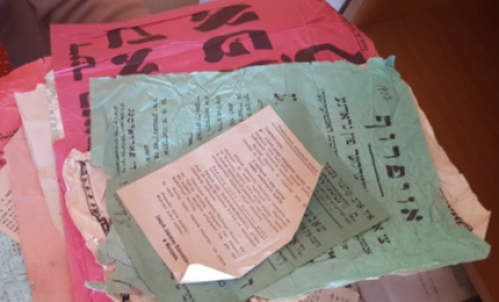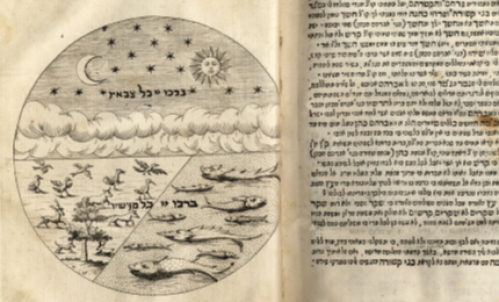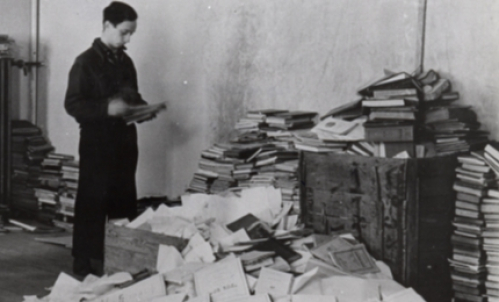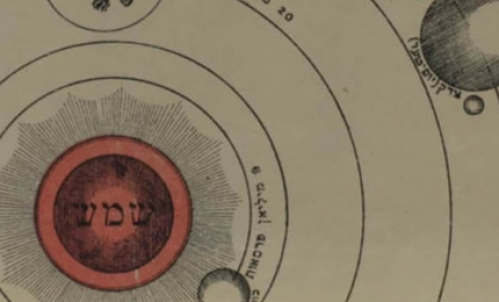Jewish Encounters with the Catholic Church in Lithuania: Interview with Elena Keidošiūtė
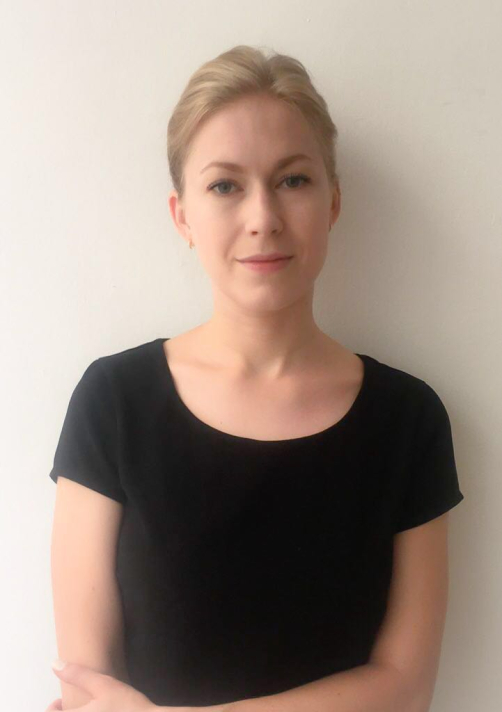
Elena Keidošiūtė is the 2016 Prins Foundation postdoctoral fellow at the Center for Jewish History where she is conducting research in the YIVO Archives on trends in Jewish conversion to Catholicism in Lithuania. A graduate of both Vilnius University and Southampton University, United Kingdom, she is currently a visiting scholar at the Hebrew and Judaic Studies Department at New York University.
She was interviewed about her work by Roberta Newman on June 9, 2016.
RN: Tell me more about the topic that you're working on here in the archives. Will your research be turned into a book?
EK: The project for which I applied for the fellowship here is based on my doctoral thesis on Catholic missions and Jewish conversions in Lithuania. I set out to explore the phenomenon of conversion from Judaism to Catholicism and also Catholic missionary activity, although I did not anticipate finding anything regarding the missions here in New York, so I was mainly focused on the conversions themselves and their historical context. I looked at YIVO collections from the 19th century, such as the Records of the Vilna Chief of Police and RG 46, the Records of the Lithuanian Consistory of the Russian Orthodox Church. I focus on Catholic conversions but it was very useful for me to compare Orthodox conversion materials.
My thesis originally included the topic of conversions during the Holocaust but I've recently decided that this particular aspect of my research should not be included in the book. I'll write it up as an article instead. But regardless, I did do some research on it here. Mainly, I looked at the YIVO Archives Territorial Collections that hold a certain amount of material on the Holocaust.
RN: What drew you to this topic, originally?
EK: When I was an undergraduate, I was just generally interested in the history of Catholic Church. And then I discovered the field of Jewish studies, and conversion happened to be the topic that has brought the two together. I started out by looking into the activity of Mariae Vitae congregation, which was active from the mid-18th century to the mid-19th century. It was established in the Lithuanian duchy period and then transitioned into the imperial Russian period, but after the 1863 uprising against the Russian Empire, it was closed, in 1864. One of their main goals was to take care of and prepare Jewish female converts. So I looked into their activity, strategy and so forth. And from that developed a fervor that carried into my doctoral studies. What was the nature of this phenomenon in Lithuania? How did it change over time? Because there are so many geopolitical and cultural changes going on—the conversion phenomenon is like a prism through which to look at those changes. And you have a large, significant Jewish community that is also reacting to these geopolitical and cultural transformations, and conversion is something that is on the spectrum of their reactions.
RN: What gap is your research filling in scholarship on Lithuanian, Jewish, and even church history?
EK: The history of the Catholic Church in Lithuania has been well-researched. Especially if you read Lithuanian, there is plenty of material. But the question of the Church and Jews, especially in modern period, is under-researched. So that’s where I see myself. Jewish studies in Lithuania is picking up in pace and is expanding. There are more and more people interested in this, but still there is so much to research. Even the questions that I inevitably touch upon, like acculturation, assimilation—there are still so many niches to fill in, and so many sources to look at, and so many questions to answer, that sometimes it makes my work harder, because there is a lack of research to lean on when I'm trying to answer the questions I have.
RN: Lithuanian territories passed into the control of the Russian Empire in the 18th century and then after World War I part of these lands were incorporated into the Polish Republic. Does this make your work particularly complicated?
EK: Yes, of course, definitely. You have to make a little bit of an extra effort, because you have to learn quite a few languages in order to access the sources: Polish, Russian, Yiddish, and Lithuanian, of course, and understand all these changing political and sociocultural contexts.. Knowing all these other languages which were sort of a given earlier for many people, but now it's not that way anymore and students have to make an extra effort to learn them and also to learn to read them
However, the complexity of such research lies not only in languages of the sources, but also in that one has to have a good knowledge of a vast historiography, produced by an international cohort of scholars, on these several chronological periods, often covering different geographical and sociocultural constellations. Especially when Russian Empire, interwar period Poland and interwar period Lithuania are separate large research topics within themselves. So finding a fitting place for this chronologically and geographically amorphous research is not simple, but all that more exciting
RN: It does seem exciting to be doing Jewish studies in Lithuania, because there's so many things that you can study that no one else has looked at before. There still aren't that many people in Jewish studies who know Lithuanian. And not many people in Lithuania who can read Yiddish.
EK: Yes, I know a few people who have learned Lithuanian. (I can't boast about that because it's my native language.) But even the assumption that all Lithuanians know Russian is wrong, only people above a certain age, maybe. It's a Slavic language with a different alphabet and if you didn't have any exposure to it you have to learn it from scratch.
RN: It's just as hard as for Americans, it sounds like. Except Americans are very bad at learning languages! This is a big question, maybe too big a question: What are you hoping that your work will bring to both Jewish studies and to the field of Lithuanian history?
EK: Apart from the things that I already mentioned, what I'm looking at are not the elites, but at the Catholic masses and the Jewish masses and their relationships, which are poorly recorded in the sources and so not always represented. Because it hasn’t been a primary research concern for a long time. I think these kind of under-the-radar narratives are interesting, important, and sometimes even more telling about the past in Lithuania than histories of the rich elite.
RN: Where did the Catholic Church stand on the hierarchy of religions in the Russian Empire?
EK: Catholicism was one of the officially tolerated religions in the Russian Empire but Orthodoxy was considered to be above all the religion of the Tsar and the empire. But, having said that, Catholicism continued to shape the lives of people in Lithuania. This was a question of religious politics, identity politics, in general.
You know, when you look a little bit deeper, you understand that what is Lithuanian or what is Polish, or Belorussian—especially in this region—is a mixture of ethnic, and religious, and linguistic belongings. And that's what has also always fascinated me. Often people nowadays in Lithuania lack an understanding that not a very long time ago, people—including their own great-great-great-grandparents—weren't so sure about or strict about what kind of label they were fitting into. Sometimes identity was very local and fluid. And there were also significant Jewish communities that constituted a significant part of the regional ethnic map. There was transgressing from one community to the other, and that was also part of the relationships between groups and individuals.
RN: So your work is also about the fluidity of those boundaries.
EK: Yes, it's a social-cultural study, basically. And also it's a chapter of Catholic Church history. Such as, how did the missionary’ work develop? What did it entail, why there was eagerness or lack thereof to convert Jews, how it was done? What was offered to converts and what was imagined would happen to a convert after she/he converted? How did conversion fit into the political constellation of particular periods
RN: Why is the Holocaust period not going to be part of your book?
EK: Because it's a period hard to compare. You need different methodology to look at it and to deconstruct it. The motivations of the converts are rather flat, there's not much depth to it, because people are doing it to save their lives. And trying to disguise themselves as Catholics. They chose certain churches to go to, of course, but it's extremely different set of circumstances that need a different kind of analysis. For example, it's the first time you have family conversions in the region. It's all very individualistic before that, and suddenly in 1941 there are whole families converting, for obvious reasons.
It's sort of the finale of the phenomenon. There are no conversions after 1941: there is barely anyone left to convert, people also see it doesn’t really help them to avoid ghettos or death, and generally after WWII, when compared to previous periods, conversion of Jews ceases to be preoccupation of the Church.
RN: Did converting during the Holocaust save anyone? For instance, did people end up surviving because they were hidden by priests or nuns?
EK: Some of them did, if they hid successfully. However, generally converts ended up in the ghettos, so that would signify that it didn't save them and they ended up there with the rest of the people defined as Jews. For example, I have a letter from archbishop Mečislovas Reinys, where he asks for converts in the Vilna ghetto to be allowed to go to mass. So they're there, and they're kind of trying to be observant Catholics or at least to demonstrate that they're being observant Catholics. But it appears they were killed along with other inhabitants of the ghetto.
And also German authorities themselves are inquiring into this practice, they're telling Church officials not to convert Jews because, you know, religious affiliation doesn't matter, “a Jew” is a racial definition, and baptism is not going to save them. After that, it becomes only a matter of baptisms of hidden children, or priests, monks, and nuns arranging fake documents. But in these cases we can question whether an actual conversion took place or not.
Interview transcribed by Emma Gutman and edited for length and clarity.
